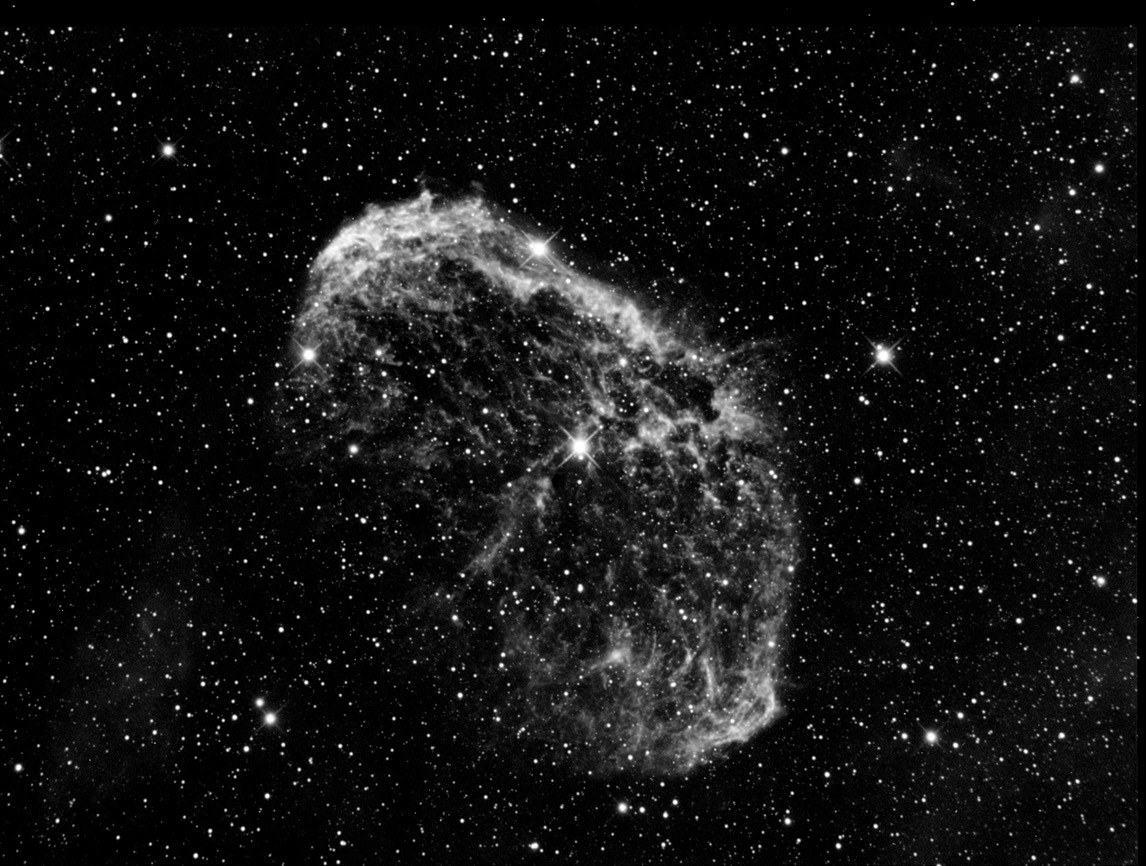Date: 9/10//2012
Description: The Crescent Nebula (also known as NGC 6888, Caldwell 27, Sharpless 105) is an emission nebula in the constellation Cygnus, about 5000 light-years away. It is formed by the fast stellar wind from the Wolf-Rayet star WR 136 (HD 192163) colliding with and energizing the slower moving wind ejected by the star when it became a red giant around 250,000 to 400,000 years ago. The result of the collision is a shell and two shock waves, one moving outward and one moving inward. The inward moving shock wave heats the stellar wind to X-ray-emitting temperatures. It is a rather faint object located about 2 degrees SW of Sadr. For most telescopes it requires a UHC or OIII filter to see. Under favorable circumstances a telescope as small as 8cm (with filter) can see its nebulosity. Larger telescopes (20cm or more) reveal the crescent or a Euro sign shape which makes some to call it the "Euro sign nebula”. [Ref: Wikipedia]
Sky Conditions:
Clear sky, urban light pollution
FWHM: 2.0 - 2.5 arc sec/pixel
Imaging:
Exposure: 120 min (12 x10min) at 2x2 bin using CLS Filter
Guiding: 6 sec at 2x2 bin
Equipment:
SBIG STF8300M CCD (Halpha filter)
AT10RC at F8
Starlight Focuser & Multiport
Guide-scope (1100mm) w/STi guider using ADM guide adjuster & 2X barlow
AP1200 mount
SW:
Maxim DL V5, FocusMax, CCD-autopilot V4, Robofocus, AP ASCOM V2, SkyX, Photoshop CS4 (using Astro-Tools deep space noise reduction) - no noise reduction and no sharpening, calibration with only darks and bias
